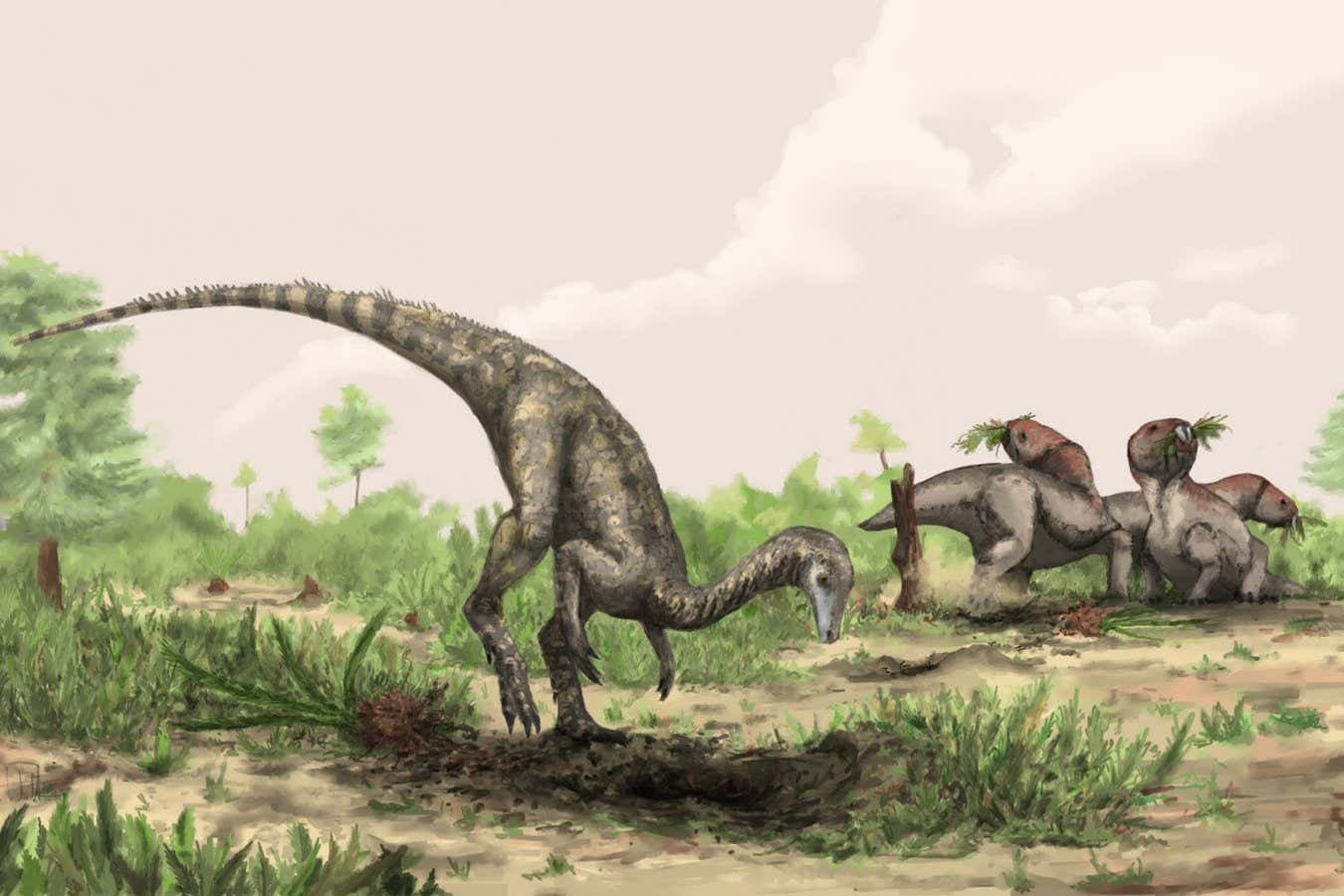Life would have been hot and dry if the dinosaurs really did appear near the equator
Mark Witton/The Trustees of the Natural History Museum, London
Dinosaurs may have first evolved close to the equator, not as far south in the southern hemisphere as previously thought. A modeling study suggests that they originated in a region covering what is now the Amazon rainforest, the Congo basin and the Sahara desert.
“When you think about the gaps in the fossil record and the evolutionary tree of the dinosaurs, it could very likely be a center of where the dinosaurs came from,” says Joel Heath of University College London.
Dinosaurs evolved sometime during the Triassic period, which ran from 252 to 201 million years ago, but Heath says there is “pretty huge” uncertainty about where and when. The oldest known fossils of these animals are about 230 million years old, but they are clear enough to suggest that dinosaurs had already been around for a few million years. “A lot must have happened in terms of dinosaur evolution, but we just don’t have the fossils,” he says.
At this time, Earth looked very different. All the continents were gathered into a single supercontinent called Pangaea, which was shaped like a C with its center straddling the equator. South America and Africa were in the southern hemisphere segment of this where they fit together like jigsaw pieces. The earliest known dinosaurs are from the southern parts of these two continents, in places like modern Argentina and Zimbabwe – so this was thought to be their place of origin.
To learn more, Heath and his colleagues built computer models to work backwards in time from the oldest known dinosaurs to the group’s origins. They created several dozen versions to account for uncertainties such as gaps in the fossil record, possible geographic barriers and lingering doubts about how the earliest dinosaurs were related to each other.
Most of these simulations concluded that dinosaurs first appeared near the equator, with only a minority supporting a southern origin.
Paleontologists have tended to assume that dinosaurs could not have originated near the equator, Heath says, in part because there are no early dinosaur fossils from that region. What’s more, it was a challenging place to live. “It was very, very dry and very hot,” he says. “The dinosaurs were not thought to have been able to survive in those kinds of conditions.”
However, most models say otherwise. “It suggests things that we didn’t actually think were possible before,” says Heath.
Instead, the lack of early dinosaur fossils from near the equator may have a more prosaic explanation. Paleontologists have tended to dig in North America and Europe, and more recently in China. “There are lots of areas on the globe that are quite neglected,” says Heath. He adds that geologists have not found many rocks of the right age in the regions relevant to the study’s results that they can excavate. “They may not be exposed in a way that we can easily study them.”
However, a piece of evidence to support Heath’s idea has recently emerged. On January 8, researchers led by David Lovelace at the University of Wisconsin-Madison reported that they had found the oldest known dinosaur from the northern part of Pangaea. They discovered a species new to science called Ahvaytum bhandooiveche, a sauropodomorph related to long-necked dinosaurs which Diplodocus that developed later. The team found it in the rocks of the Popo Agie Formation in Wyoming, dated to 230 million years ago.
If dinosaurs were already in the northern and southern parts of Pangea so long ago, the equatorial center cannot have been closed to them, Heath says. “They must have crossed that region.”
Subjects:
